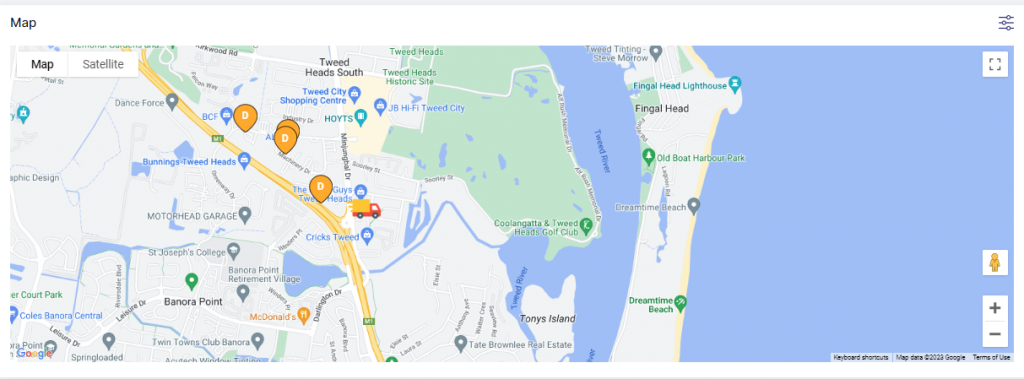Managing logistics for driver and dispatcher operations can be a complex and challenging task. To streamline this process, many logistics companies use a run sheet. A run sheet is a document that outlines the tasks, schedules, and resources required to complete a job. In this article, we will explore the logistics of using a runsheet for driver and dispatcher operations.
What is a Runsheet?
A runsheet is a document that contains all the necessary information for completing a job. It includes details such as the location of the job site, the tasks to be completed, the materials required, and the timeline for completion. The runsheet is typically created by the dispatcher, who assigns tasks to the drivers based on their availability and skill set.

Benefits of Using a Runsheet
Using a runsheet can have many benefits for driver and dispatcher operations. Here are some of the most significant advantages:
Improved Communication
One of the most significant benefits of using a runsheet is improved communication between drivers and dispatchers. With a runsheet, drivers have a clear understanding of their tasks and can communicate any issues or delays to the dispatcher. This allows the dispatcher to make adjustments to the schedule in real-time, ensuring that the job is completed on time.
Increased Efficiency
A runsheet also increases efficiency by ensuring that drivers have all the necessary information and resources to complete their tasks. This reduces the amount of time drivers spend looking for materials or trying to figure out what tasks they need to complete. It also ensures that drivers are using their time effectively, reducing the amount of downtime between jobs.
It shows clearly below that the driver has 18 Deliveries and 1 Pickup for today’s run sheet with route optimization.

Better Resource Management
A runsheet also allows for better resource management. The dispatcher can assign tasks based on the availability and skill set of the drivers, ensuring that each job is completed by the most qualified and available driver. This reduces the amount of time and resources wasted on unnecessary trips or delays.
Improved Customer Service
Finally, using a runsheet can improve customer service. With a runsheet, drivers have a clear understanding of the job requirements and can complete the job efficiently and effectively. This ensures that the customer receives their delivery or service on time, improving customer satisfaction.
How to Create a Runsheet
Creating a runsheet requires careful planning and attention to detail. Here are the steps involved in creating a runsheet:
Step 1: Identify the Job Requirements
The first step in creating a runsheet is to identify the job requirements. This includes the location of the job site, the tasks to be completed, the materials required, and the timeline for completion. The dispatcher should also consider any special requirements, such as the need for specialized equipment or permits.
Step 2: Assign Tasks to Drivers
Once the job requirements have been identified, the dispatcher can assign tasks to drivers based on their availability and skill set. The dispatcher should also consider any driver preferences or limitations, such as the need for breaks or the ability to handle heavy equipment.
Step 3: Create a Schedule
Once the tasks have been assigned, the dispatcher can create a schedule that outlines the timeline for completion. This should include the start and end times for each task, as well as any breaks or downtime.
See all in one page

Step 4: Allocate Resources
The dispatcher should also allocate the necessary resources, such as vehicles, materials, and equipment, to each task. This ensures that each driver has everything they need to complete their tasks efficiently and effectively.
Step 5: Communicate with Drivers
Finally, the dispatcher should communicate the run sheet to the drivers. This can be done through a variety of methods, such as email, text messages, or a mobile app. The run sheet should include all the necessary information, such as the location of the job site, the item details, Pickup and delivery instructions, driver instructions, start time and which truck to pick up.
How to manage Runsheet with Despatchy
Despatchy is a software solution that can help logistics companies streamline their driver and dispatcher operations by creating and managing runsheets. With Despatchy, dispatchers can create runsheets in real-time, assign tasks to drivers, and track the progress of each job.
Despatchy offers many features that can help logistics companies improve their operations. Here are some of the most significant benefits of using Despatchy:
Automated Runsheets
Despatchy can create runsheets automatically, saving dispatchers time and reducing the chance of errors. Dispatchers can input job requirements, and Despatchy will create a runsheet that includes all the necessary tasks, resources, and timelines.

Real-Time Tracking
Despatchy allows dispatchers to track the progress of each job in real-time. This means that dispatchers can make adjustments to the schedule as needed, ensuring that each job is completed on time.

Driver Management
Despatchy also includes features for managing drivers, such as driver availability and skill set. Dispatchers can assign tasks to the most qualified and available driver, reducing the chance of delays and ensuring that each job is completed efficiently.

Resource Management
Despatchy can also help with resource management by allocating vehicles, materials, and equipment to each task. This ensures that each driver has everything they need to complete their tasks efficiently and effectively.

Customizable Reports
Despatchy allows dispatchers to generate customizable reports, providing insights into driver performance, job completion times, and other key metrics. This information can be used to improve operations and increase efficiency.

In summary, using Despatchy can help logistics companies streamline their driver and dispatcher operations by automating runsheets, tracking job progress in real-time, managing drivers and resources, and generating customizable reports. By using Despatchy, logistics companies can improve their operations, reduce errors and delays, and provide better customer service.
